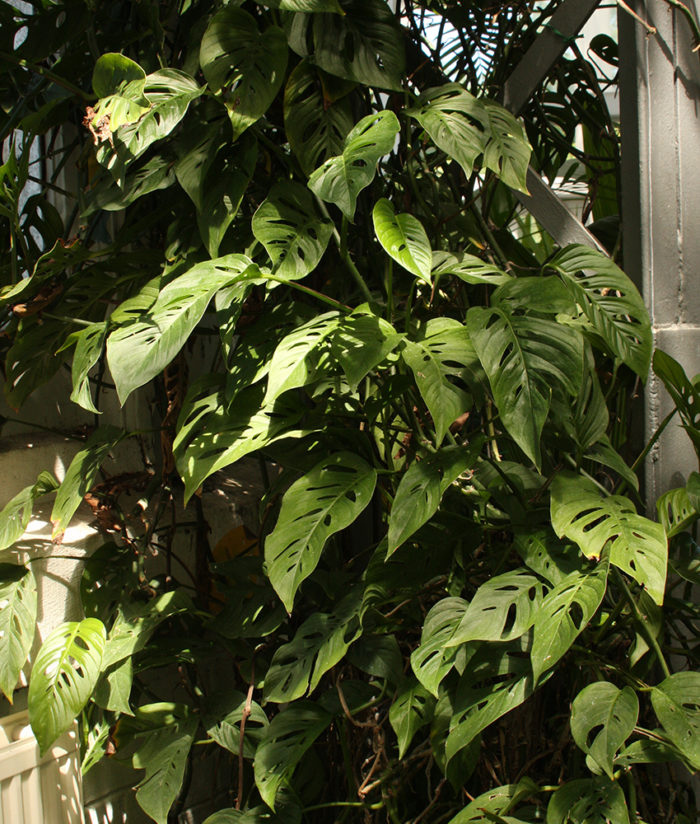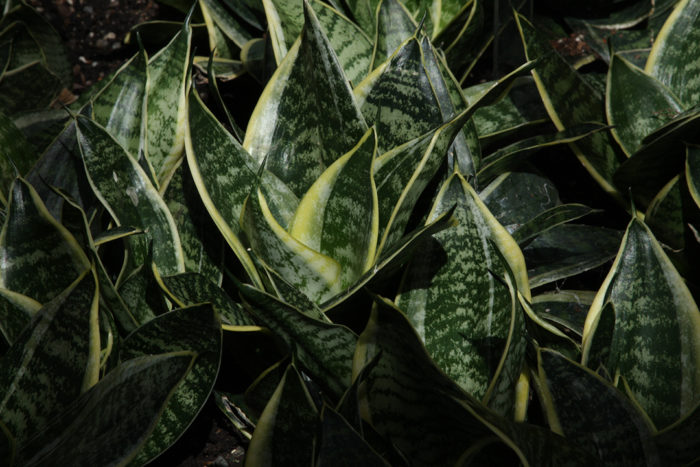
July weather is hot and dry, so why not stay inside with the air-conditioning or a fan and catch up on your indoor gardening? Indoor plants need love too, so get out a tarp and get ready for some repotting. Without the benefit of outdoor soil and natural rains, indoor plants build up salts in the soil, so it is important to repot your indoor plants with new soil every one to two years.

The first step of the repotting process is to stop by your local nursery for some potting soil and organic fertilizer. You should pick a potting-soil mix that works indoors; it should have decent drainage but also be able to hold and store water. If you have succulents, use a cactus and succulent mix. It’s also a good idea to find a few extra pots, as you may be able to divide some of your indoor beauties in the process.
Once you bring your supplies (and possibly a few new plants) home, lay out a tarp in your work area and get to work. Grab a big container for your old soil, which can be added to the compost pile as long as your plants are disease free and your compost is outdoors and will receive rain to wash out the salts.

Next, remove a plant from its pot and knock off most of the old soil. Take a look at the roots—most likely they have begun to circle the pot, so you will want to untangle them from this position so that they do not strangle the plant. If you are using the same pot, trim off some of the roots if you need more room for soil. If the plant is too big, you may need to move it to a larger pot or divide it in two, depending on the species. You may be able to figure out by yourself if a plant is getting too big for its post, but some general rules are that there should always be room for soil, and the pot should not be less than one-third the size of the plant. Most indoor plants that have grown too big can be divided, including Swiss cheese plant (Monstera deliciosa, Zones 10–12), snake plant (Sanseveria trifasciata and cvs., Zones 10—12), ivy (Hedera spp. and cvs., Zones 4–9), and philodendron (Philodendron spp. and cvs., Zones 9–11). These plants can also be regrown from cuttings. I usually use an old steak knife to saw through the roots and crown of plants that need to be divided.

Add new soil and repot, making sure to get soil firmly pressed into the nooks and crannies around the roots. Do not overfill the pot—make sure to leave about an inch of space below the rim of the pot so you can easily water deeply.
The last step is a deep watering. I like to keep an eye on the soil level for the first week. If the soil settles, add a bit more until it is an inch below the rim of the pot. This is also a great time to set a calendar alert to remind you to fertilize every six weeks or so.
Your plants should perk up and grow new leaves over the next few weeks so that you can enjoy your indoor paradise while your outdoor garden heats up.
—Rachel Young is the former director of horticulture and garden operations at Descanso Gardens in La Cañada, California.


















Comments
Log in or create an account to post a comment.
Sign up Log in